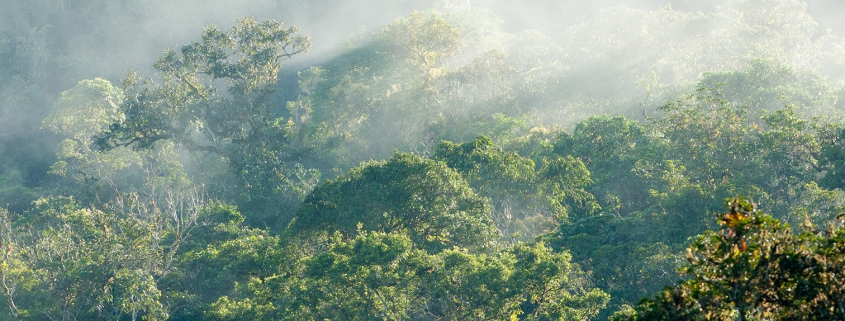5 Benefits of Protected Areas
Rainforest Trust’s mission for over 30 years has been to prevent destruction and deforestation of tropical habitat through the creation of protected areas. Critical habitat around the world faces increasing threats, ranging from forest fires due to slash and burn agriculture, to land clearing for large scale development, to desertification. The results put our planet and all its inhabitants at risk.
The top five reasons protected areas matter are:
1. Safeguard Biodiversity
We are currently living in the sixth mass extinction. Species are being lost at an alarming rate. Protected areas guard critical habitat for species so that they can thrive in nature, unimpacted by human disturbance. Recent studies have shown that on average the number of species in a protected area is 10.6% higher than outside, and the populations of those species are 14.5% greater when they live on protected land.

Photo by Axel Gebauer.
2. Prevent the Spread of Disease
Clearing habitat displaces biodiversity and renders ecosystems unbalanced. As wildlife is pushed to marginal habitats and increasingly comes into contact with humans, ideal conditions are created for the emergence of zoonotic disease. An estimated 60% of infectious diseases –including SARS-CoV-2, Lyme and Ebola–are zoonotic in origin. Protected areas keep ecosystems intact, thus playing a vital role in disease prevention.

Photo by Rainforest Trust.
3. Provide Local Economic Success
When created in collaboration with nearby communities, local economies stand to benefit from protected areas. Many protected areas are hotspots for ecotourism, bringing new revenue that directly benefits communities. Community members often find employment in the protected area or within an industry supporting tourism.

Photo by Ami Vitale.
4. Ensure Food and Water Security
Millions of people depend on the food produced or obtained in and around protected areas. Protected areas safeguard and foster the biodiversity in ecosystems that has long served as important dietary components for local communities for thousands of years, such as fish, plants, fruits, honey and much more. Management plans often promote best practices for sustainable agriculture that result in greater supplies for local communities to consume or sell. These areas also protect watersheds that ensure a clean water supply.

Photo by Rainforest Trust.
5. Build Resilience Against Climate Change
Many of our planet’s habitats–including forests, peat swamps and oceans–store excess greenhouse gases like carbon and keep them from our atmosphere, regulating the global climate. But when they are wiped out for unsustainable development, our planet’s climate becomes less predictable and more extreme, making us more susceptible to the disastrous effects of climate change. Creating and maintaining protected areas is the simplest solution to halting these harmful human-induced activities, and, in turn, sequestering carbon to reduce climate change.

Photo by Rainforest Trust.
Protected areas matter. We all benefit when nature is protected and healthy. The need has never been more urgent. Be a part of our impact and donate today.





